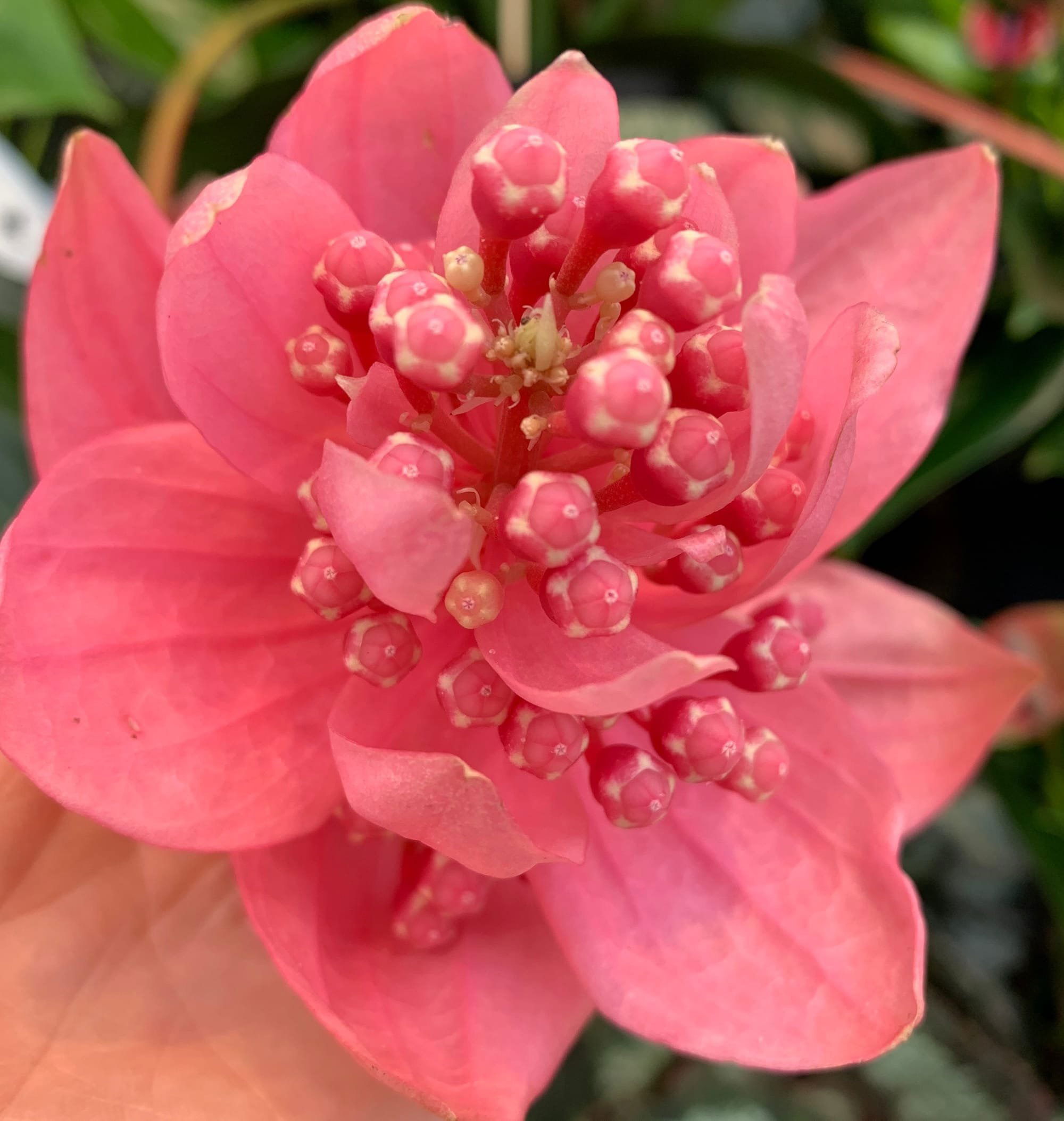
Medinilla magnifica
Contents
- Top Tips
- Location, Water, Humidity & Fertilisation
- Dormancy Care & Annual Flowers
- Common Issues
- Origins, Temperature, Propagation, Repotting & Toxicity.
Need the answer to a specific plant query? Book a 1-to-1 video call with Joe Bagley, the website's friendly author to overcome and address your niggling problem! Available on iMessage, WhatsApp, Facebook Messenger & more.
Top Tips & Info
- Care Difficulty - Moderate
- Medinilla will require bright, indirect light with a good level of humidity & temperature. Avoid excessive dark locations due to the risk of soil mould.
- Allow the soil's top third to dry in between waters, reducing this slightly further in the autumn and winter.
- A good level of humidity and air circulation is crucial for a long-lasting specimen. Be sure to introduce a pebble tray to maintain a reliable level of atmospheric moisture.
- During the spring and summer, use either a 'Houseplant' or 'Orchid'-labelled fertiliser at fortnightly intervals. Reduce this to monthly once the growing period is over to replicate its dormancy period.
- Medinilla won't need frequent repotting, so transplant the specimen into the next sized pot with adequate drainage. We'd recommend a 'Houseplant' labelled potting mix for aeration and drainage reasons.
- Keep an eye out for Mealybugs & Scale that'll inhabit the cubbyholes of the foliage and flowers.
Location & Light - 🔸🔸
We'd recommend situating a Medinilla in a location that offers bright light without the risk of direct sun. Although an hour or two of the rays won't cause too much of an issue, this species is tolerable to sun-scorch and severe dehydration. Over the autumn and winter, you're permitted to providing a brighter area with the possibility of morning or evening sunlight. During this time of year, the natural rays will be weekend and will provide much-needed nutrition and energy over its dormancy period.
The amount of light and current season of the year will directly govern the frequencies of waters per month. Specimens placed in darker areas must be kept on the drier side to life, whereas brighter locations will require more soil moisture to lubricate photosynthesis.
Water - 🔸🔸
Allow the soil's top third to dry in between waters, reducing this further in the autumn and winter. Avoid prolonged droughts while the specimen is flowering due to the risk of sudden flower loss. If you're unsure as to when the plant needs a water, if the pot feels much lighter when lifted than when it was previously hydrated, it's time for another drink. Whilst the pot is heavy, the plant is still adequately hydrated and therefore won't need a further drench. Under-watering symptoms include shrivelling leaves, yellowed or crispy foliage, a loss of flowers & stunted growth. Over-watering symptoms include a weakened or rotten base, no new growth, yellowing lower leaves and eventual plant death.
Humidity -🔸🔸
Create a pebble tray to provide a moist and stable environment for your plant. If the surrounding saturation is too low or the heat too high, its juvenile leaves may start to brown over and curl, especially in direct sunlight. Gently rinse the foliage down from time to time to hydrate the leaves and keep the dust levels down.
Fertilisation - 🔸🔸
Feed once a fortnight using either a 'Houseplant' or 'Orchid' labelled fertiliser, reducing this to monthly during the autumn and winter. We'd recommend using a concentrated product that can be applied to the tap water when the specimen is needing a drink. Never apply a 'ready to use' product into the soil without a pre-water first, as it may cause root-burn and yellowed leaves.
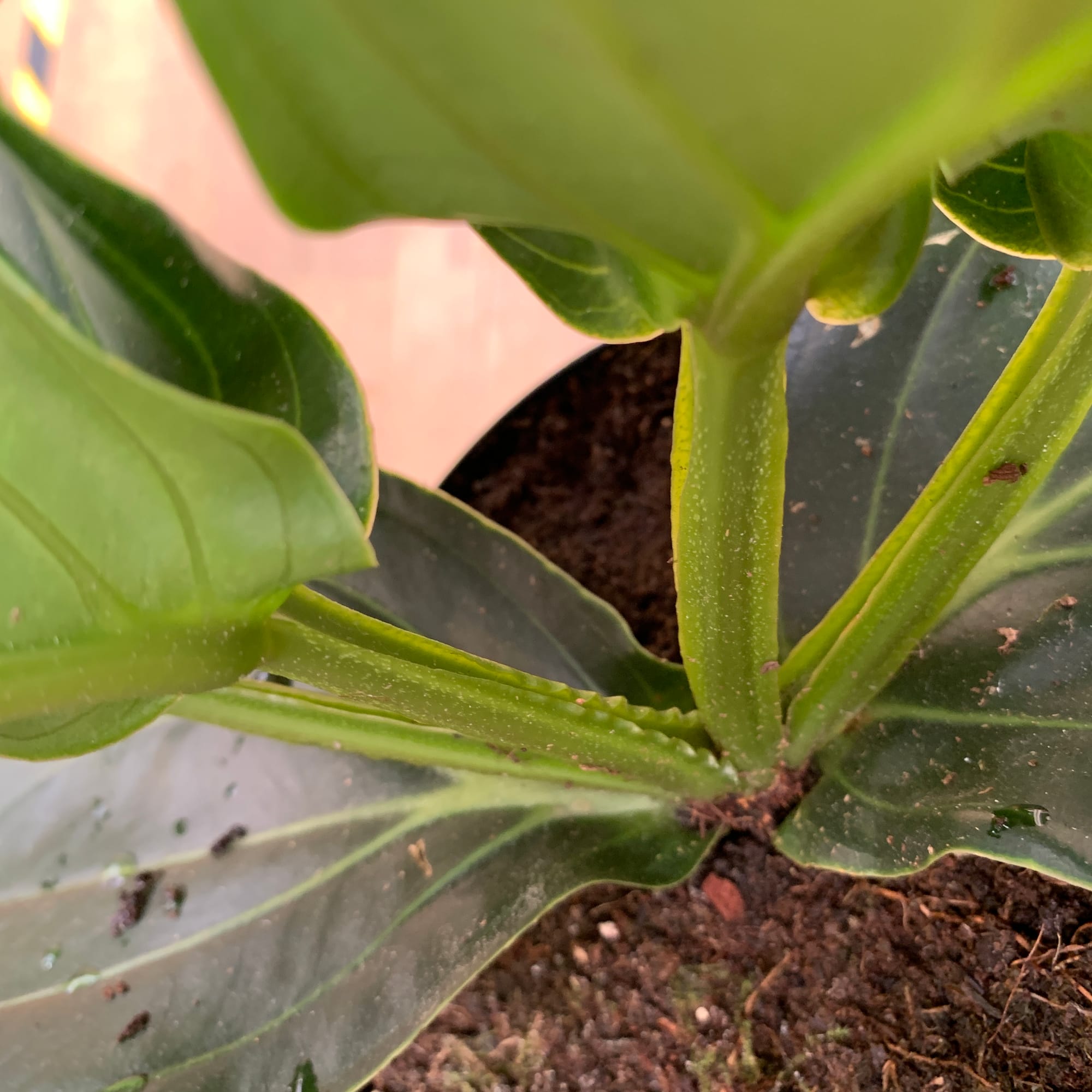 Medinilla magnifica develop 'opposite' growth where the juvenile leaves will mirror outwards. This is also where the flower stalk will develop from late spring.
Medinilla magnifica develop 'opposite' growth where the juvenile leaves will mirror outwards. This is also where the flower stalk will develop from late spring.
Common Issues with Medinilla Magnifica
Lower leaf loss is a common and significant issue among gardeners. This unfortunate phenomenon could be a product of several different problems, most notably being dark locations, water-related abuse or environmental shock. Introduce the plant to a more well-lit area with a splash of off-peak sunlight; if caught in time, the leaf loss should stop within two weeks. If you feel that your watering habits aren't up to scratch, familiarise yourself with our care tips provided at the top of this article. It's always best to under-water a Medinilla Magnifica than over-do it, purely on its poor ability to endure continued sogginess. The final culprit could be down to a sudden relocation; if you've recently purchased the specimen, the chances are it is still acclimatising to the new environment. Although this shouldn't happen, a vastly different setting will cause sudden foliage loss and stunted growth. You'll have two options of either waiting it out or presenting a more Medinilla-friendly environment, mentioned in the 'Location & Light' section. If you'd like to speak to ukhouseplants regarding this issue, don't be afraid to book a 1-to-1 call with Joe Bagley to help guide you through the step-by-step process!
Although not an issue with your plant's health, small sugar-like grains covering the leaves and foliage is a common occurrence with Medinilla growers. The specks are totally harmless and can be removed by wiping both sides of the leaves with a damp cloth. The common name for this phenomenon is 'Growth Sugars', and can affect most specimens that are currently in bloom or developing new leaves.
Root rot is a common issue among specimens sat in too dark environments with prolonged soil moisture. Symptoms include rapidly yellowing leaves, mouldy soil, stunted growth and a rotten brown base. Take the plant out of the pot and inspect health below the compost line. If the roots sport a yellow tinge, you're good to go, but if they're brown and mushy, action must be taken immediately. More information about addressing root rot can be found on this link.
Too much sunlight will lead to sun scorch, with typical signs including browning or crispy leaves, dry leaf-edges, sunken leaves or stunted growth. Although too little light will cause over-watering issues, excess sunlight will be a detriment to the plant as well. If yours has fallen short of this, reduce the amount of the sun considerably and always be mindful of environmental shock (when two locations offer too different growing conditions). Remove some of the affected leaves and increase waters slightly.
Short-lived flowers could be the product of low humidity. Place the specimen on a pebble tray, keeping the reservoir topped up with water while the heaters are operating. Never mist the flowers due to the high risk of developing Botrytis Petal Blight.
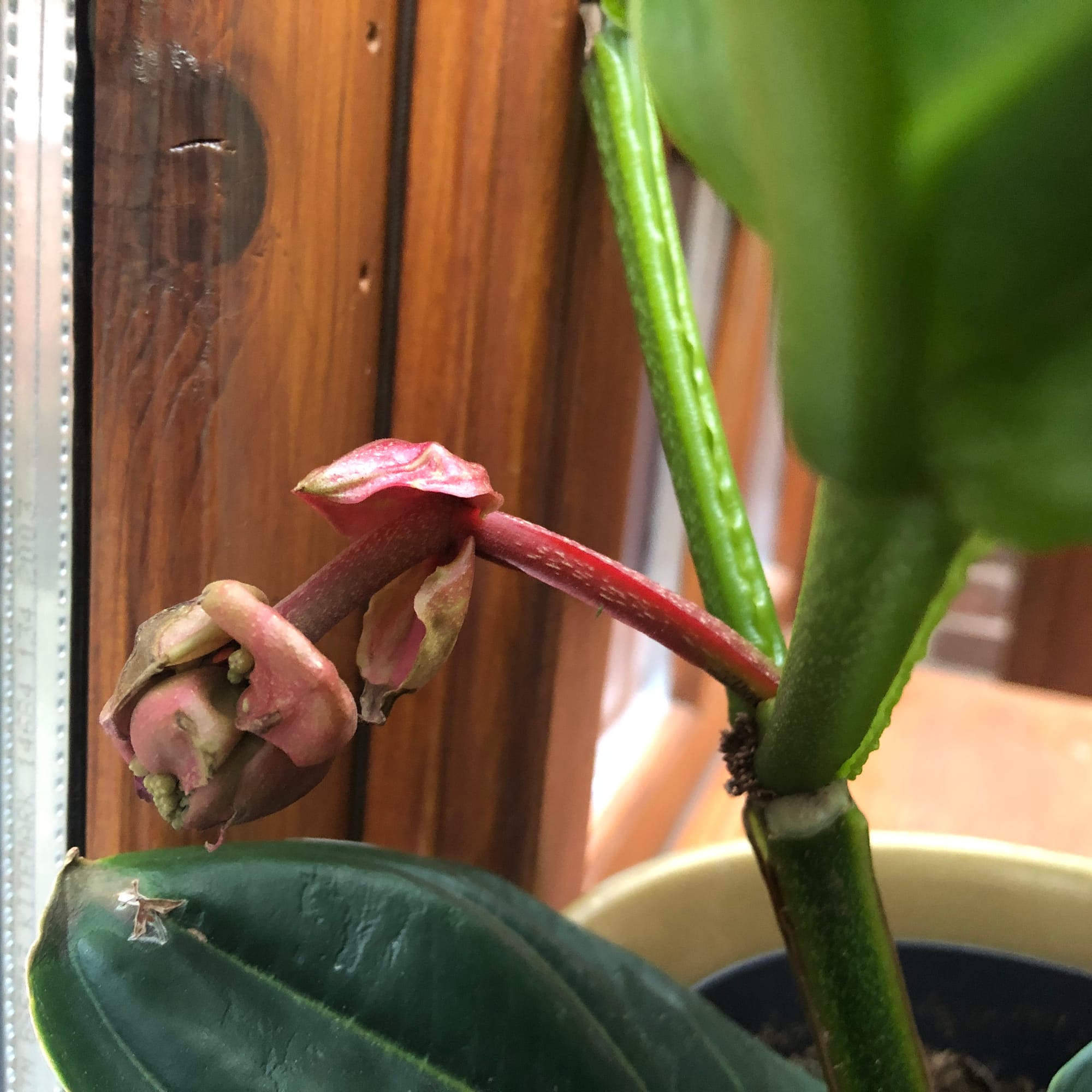 Small, stunted flowers that drop off within two weeks could be the product of environmental shock or water-related abuse like dehydration. Not much can be done to save the flowers, so focus your attention on the specimen's overall health. Keep it well-hydrated with regular feeds using a 'Houseplant' labelled product to stimulate new foliar growth.
Small, stunted flowers that drop off within two weeks could be the product of environmental shock or water-related abuse like dehydration. Not much can be done to save the flowers, so focus your attention on the specimen's overall health. Keep it well-hydrated with regular feeds using a 'Houseplant' labelled product to stimulate new foliar growth.
A lack of flowers is caused by an insufficient dormancy period, where the temperatures are kept more or less the same over the year. Reduce the temperature by a couple of degrees over the autumn and winter months, along with fewer irrigations to ensure a well-spent dormancy. As spring arrives, the natural temperature will begin to increase, with this is being the perfect time to increase waters and fertilisation. Remember, a good fluctuation of yearly temperature will certainly help the chance of a future bloom.
Powdery Mildew & Southern Blight are major threats among heavy foliage plants when excess moisture is allowed to sit on compacted foliage. Remove the affected areas and improve the growing conditions by situating the plant in a brighter location and keeping the leaves dry.
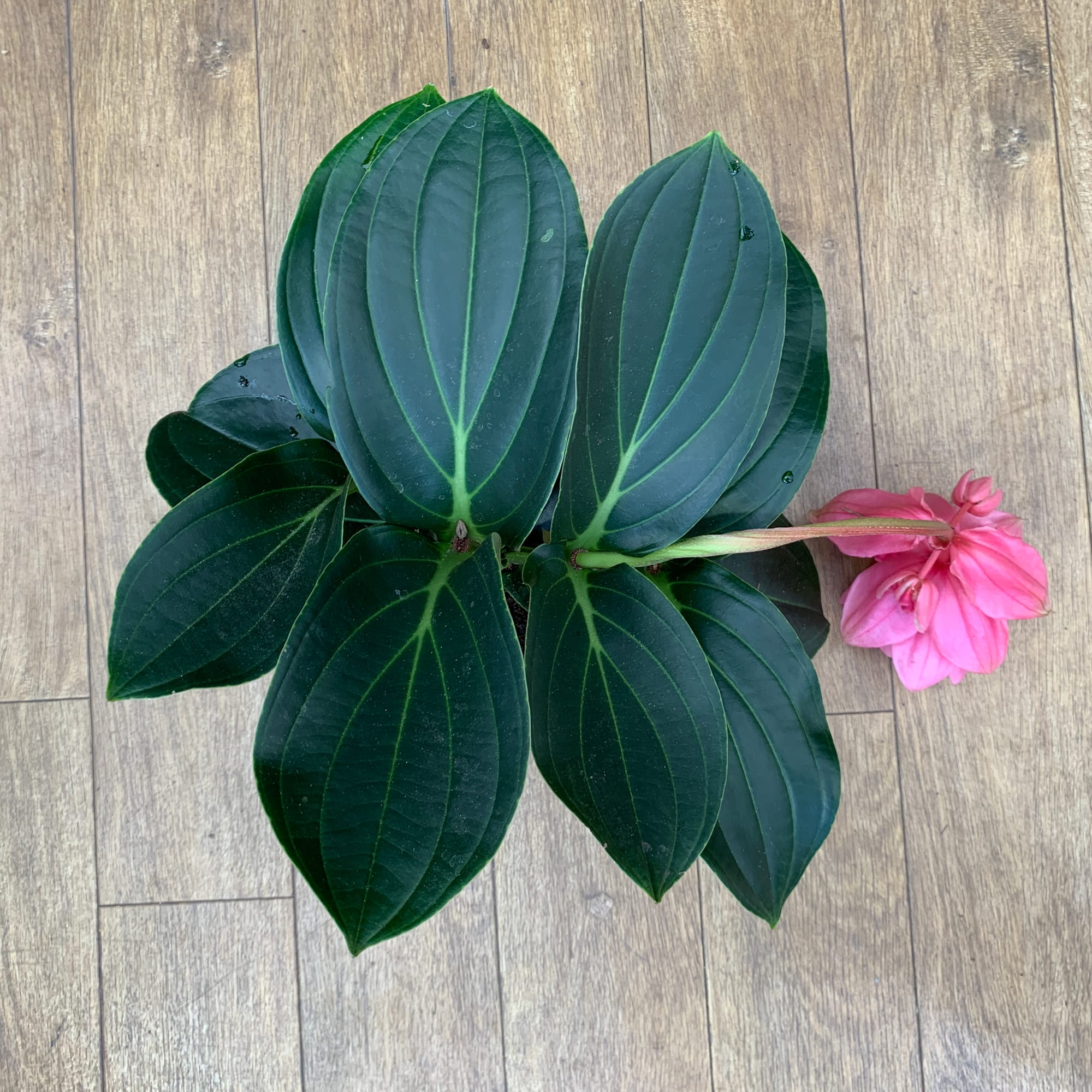 The foliage structure of Medinilla magnifica.
The foliage structure of Medinilla magnifica.
Origins
John Lindley first described this species back in 1850, honouring José de Medinilla y Pineda, who was governor of Mauritius in 1820. The specific epithet of 'magnifica' can be translated from Latin to mean 'magnificent', 'great', 'eminent', or 'distinguished', in reference to the stunning flowers on mature specimens.
 The Distribution of Medinilla magnifica.
The Distribution of Medinilla magnifica.
Temperature
14° - 30°C (58° - 86°F)
H1a (Hardiness Zone 13) - Must be grown indoors or under glass all year round. Never allow temperatures to dip below 13℃ (56℉) or permanent damage may occur in the likes of flower loss, stunted growth and blackened or yellowed leaves.
Spread
When kept indoors, a Medinilla magnifica can grow up to 1.2m in height and 0.6m in width, with the ultimate height being reached in 8 - 10 years. Expect two or three pairs of new leaves per season.
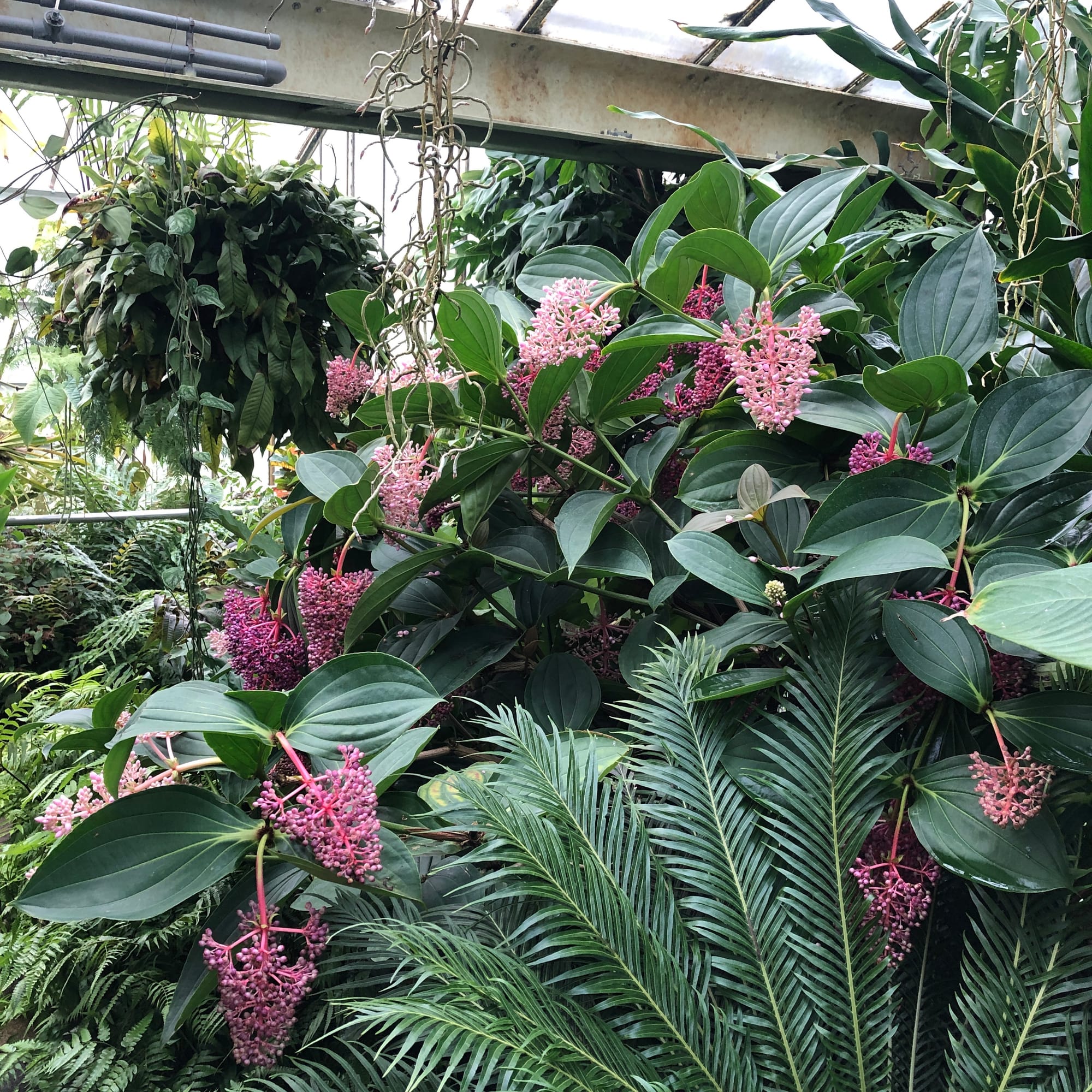 Here's a 1.2m specimen grown in Kew Gardens, UK.
Here's a 1.2m specimen grown in Kew Gardens, UK.
Pruning
Remove yellow or dying leaves, and plant debris to encourage better-growing conditions. While pruning, always use clean utensils or shears to reduce the chance of bacterial and fungal diseases. Never cut through yellowed tissue as this may cause further damage in the likes of diseases or bacterial infections. Remember to make clean incisions as too-damaged wounds may shock the plant, causing weakened growth and a decline in health.
Propagation
Via Seed or Stem Cuttings.
Stem Cuttings
- Choose the healthiest, most established stems from the leading growths. This propagation method can be taken from spring to summer, using two nodes (where the pair of leaves join).
- Cut directly between two of the nodes, using a clean pair of scissors to reduce bacteria count.
- Place the cutting into a 7cm (2.7 inches) pot of 'Houseplant' labelled compost and be sure to keep the foliage above the soil line. Wrap the plant (& its pot) in a transparent bag to maintain high humidity to avoid rapid moisture loss within the stem. Be sure to puncture several small holes into the bag to maintain good air circulation.
- Provide a bright, indirect location with continual soil moisture to quicken the rate of root development. Remove the bag after twelve weeks of substantial foliar growth and follow the care advice provided at the top of the article.
Flowers
Medinilla will produce several draping blooms from late spring until early summer, along the nodes of the stems. Each flower can last up to five weeks with the overall show lasting two months.
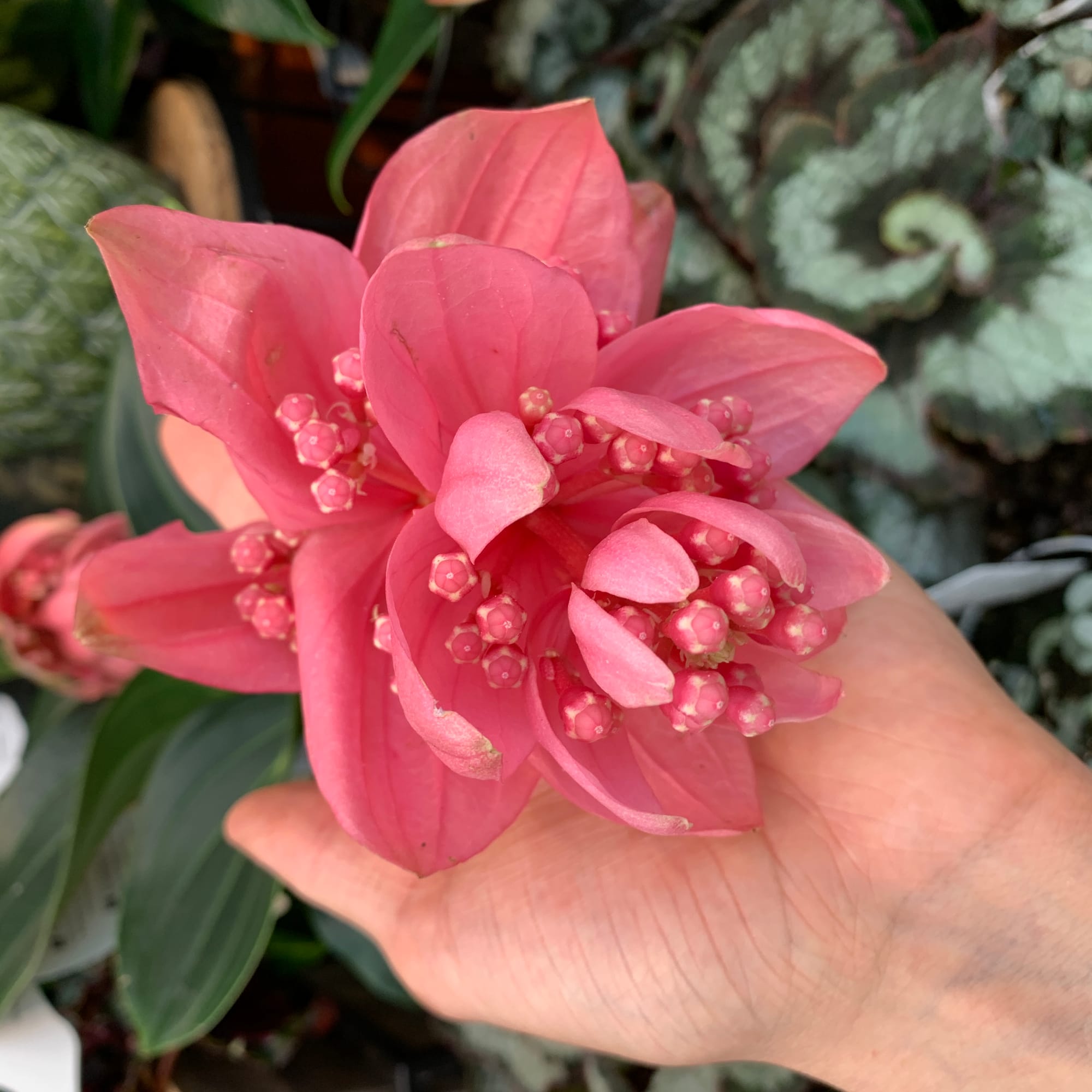 The flower bract of Medinilla magnifica. Some bracts may reach up to 30cm (12 inches) in length!
The flower bract of Medinilla magnifica. Some bracts may reach up to 30cm (12 inches) in length!
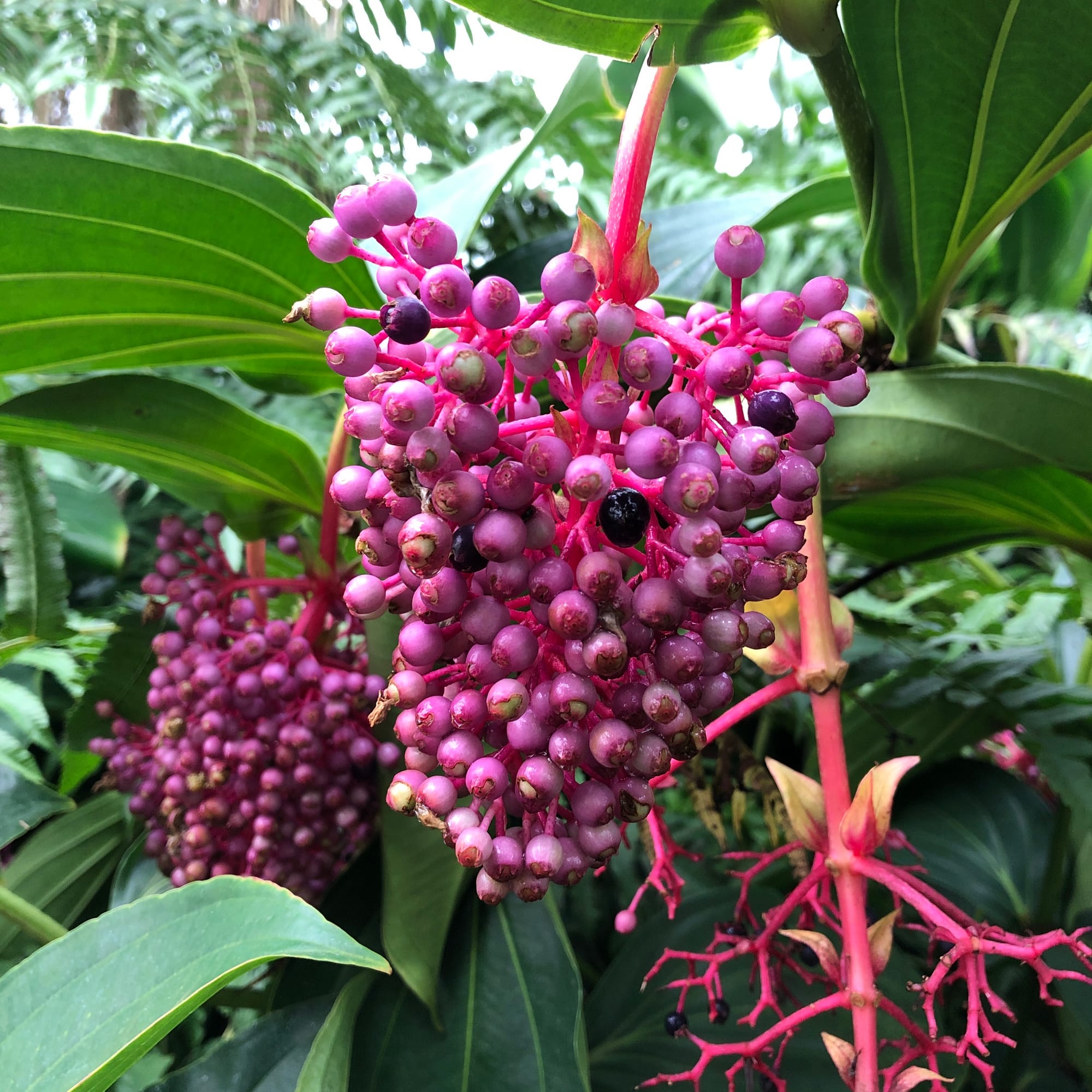 If pollination is successful, your Medinilla will produce pink berries that'll turn black when you can collect its seeds.
If pollination is successful, your Medinilla will produce pink berries that'll turn black when you can collect its seeds.
Repotting
Repot every two or three years in the spring, using a 'Houseplant' labelled potting mix and the next sized pot with adequate drainage. Medinilla are better potbound for several years due to the heightened risk of root rot and repotting-issues (like transplant shock), so only repot if you feel it's wholly necessary - restricted root growth will also increase the chance of blooms, too.
Hydrate the plant 24hrs before tinkering with the roots to prevent the risk of transplant shock. For those situated in a darker location, introduce an extra amount of perlite and grit into the deeper portion of the pot to downplay over-watering risks. Click on this link for a detailed step-by-step guide on transplantation, or via this link to learn about repotting with root rot.
Book a 1-to-1 video call with Joe Bagley if you'd like a personal guide to repotting your houseplant. This will include recommending the right branded-compost and pot size, followed by a live video call whilst you transplant the specimen for step-by-step guidance and answer any further questions!
Pests & Diseases
Keep an eye out for spider mites, mealybugs, whitefly, root mealybugs, scale & thrips. Typical diseases associated with this genus are leaf-spot disease, botrytis, powdery mildew & root rot. Click here for more information about how to identify and address any of these issues.
Toxicity
Not known to be poisonous when consumed by pets and humans. If large quantities are eaten, it may result in vomiting, nausea and a loss of appetite.
Retail Locations
Online Stores.
Book a 1-to-1 Call with Joe Bagley
If you need further advice with your houseplants, book an advice call with ukhouseplants' friendly and expert writer today! This can be done via a video or audio call on most apps, including Facebook, FaceTime & Skype. A ten-minute call costs £5.99 (US$7), or £15.99 for thirty minutes. You can ask multiple questions, including queries on plants, pests, terrariums, repotting advice and anything in between. Please consider supporting this service to keep ukhouseplants thriving!